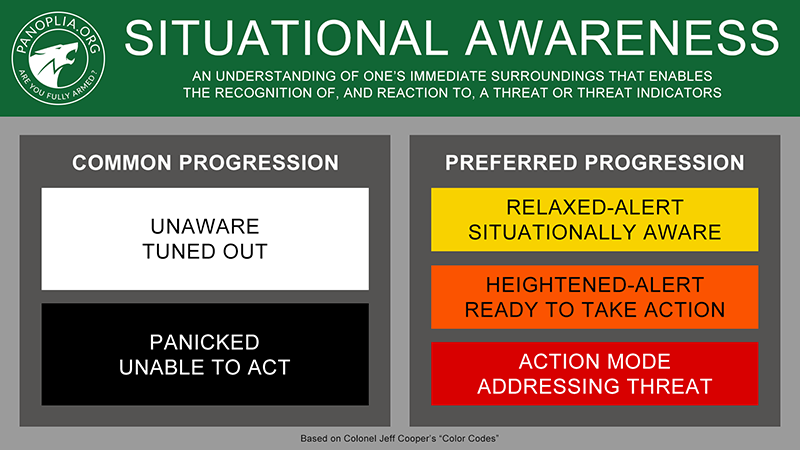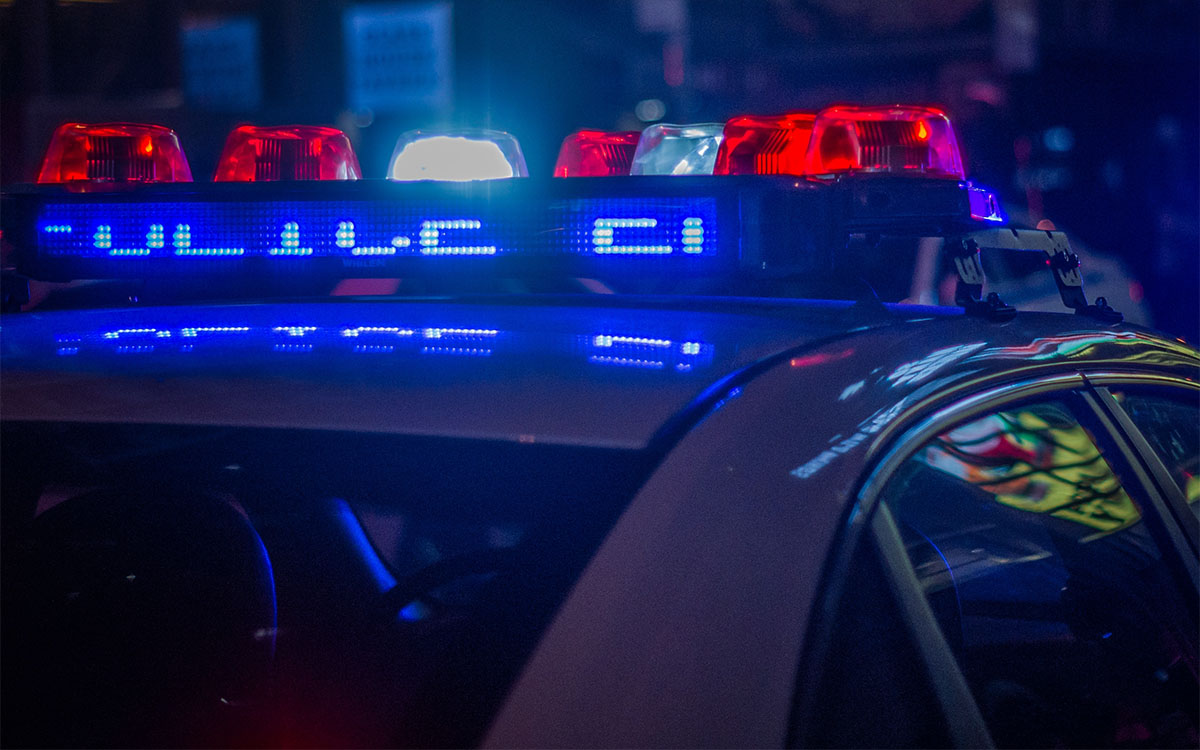About two weeks ago I received a text message from a friend. He asked if he could come over to talk about something that had just happened. As we sat down, he related an incident that had taken place just moments before.
He was in a Wawa convenience store not far from our house. After picking up a pack of bottled water, he heard a man standing not far away say into his phone, “Zephyrhills, Zephyrhills water.” Looking at the package in his hand, my friend saw that the brand of water he was carrying was Zephyrhills.
If you’re unfamiliar with how the Cooper Color Code relates to situational awareness, please see topic 02.01.03 of the Panoplia.org Soft Skills and Tactics (SST) course. The image below outlines the common vs. the preferred progression.

The words spoken into a phone by a somewhat sketchy character standing not far away from my friend may have meant nothing. Yet, in that moment it crossed his mind that the man may have been identifying him as a target for someone on the other end of the line. This simply pushed my friend from Condition Yellow into a mild Condition Orange. In other words, his level of situational awareness increased a few degrees.
After making his purchase, my friend exited the building and headed to his vehicle across the parking lot. As he did so, he noticed a young, African American man start to follow him. While continuing to walk, my friend turned his head toward the young man. He did so long enough to make full eye contact. His purpose was to let the young man know that he was aware of the situation. As soon as eye contact was made, the young man abruptly changed direction and went into the store. Back in his vehicle, my friend drove away and returned to Condition Yellow.
As we talked this over, we wondered if it may have been an attempted carjacking. It seemed unlikely since this is not a crime common to our area. Still, I was proud of my friend for being situationally aware, and for being ready to respond with the appropriate tools and force if the situation had played out differently.
After a few days, the situation outlined above simply faded into a memory. That is, until two nights ago. On that evening, just two weeks after what happened to my friend, a carjacking took place at a convenience store located about a half mile from our home. After watching the news coverage, my friend thought it probable that the perpetrator apprehended and pictured was one of the men he saw at the Wawa.
The difference between what took place involving my friend and what happened two nights ago is that the more recent incident ended with the senseless killing of an innocent man. The details of what took place have not yet been reported. What is known is that the carjacking ended with the owner of the vehicle being shot and killed by the perpetrator. Thanks to the outstanding work of law enforcement officers representing two separate jurisdictions, the killer was caught shortly after the incident. He is now off the streets and will face justice.
At this point we have no way of knowing exactly what happened between the perpetrator and the owner of the vehicle. We are also uncertain if what took place two weeks before at the Wawa was in any way connected. What we do know for sure is that practicing an appropriate level of situational awareness is as important now as it has ever been.
With violent crime rising in the United States, it’s critical that we train those we love to be aware of what’s happening in their surroundings, and to know how to respond in ways that help ensure the best outcome. We encourage you and those you love to take the Panoplia.org Soft Skills and Tactics (SST) course, and to put into practice the skills you learn. Training in, and the practice of, situational awareness can help one avoid many incidents that might otherwise end poorly.
We also encourage you to consider taking firearms training from an experienced and reputable source such as those found on shootingclasses.com. No matter how skilled you are in the art of situational awareness, there are times when violent encounters take place. In such circumstances a well-trained, lawfully-armed citizen making good decisions can have a positive impact on the outcome.




0 Comments